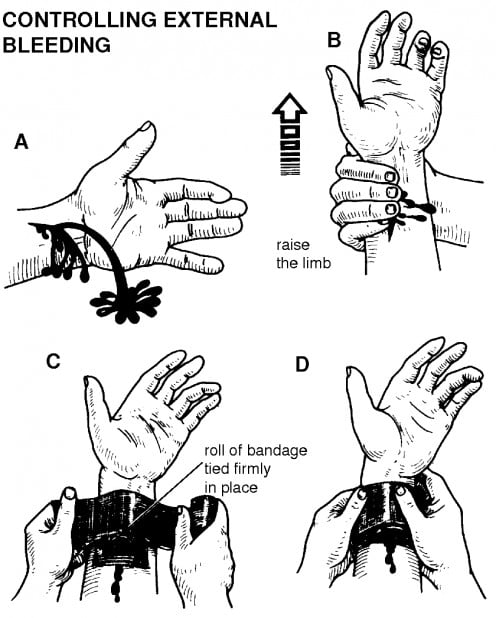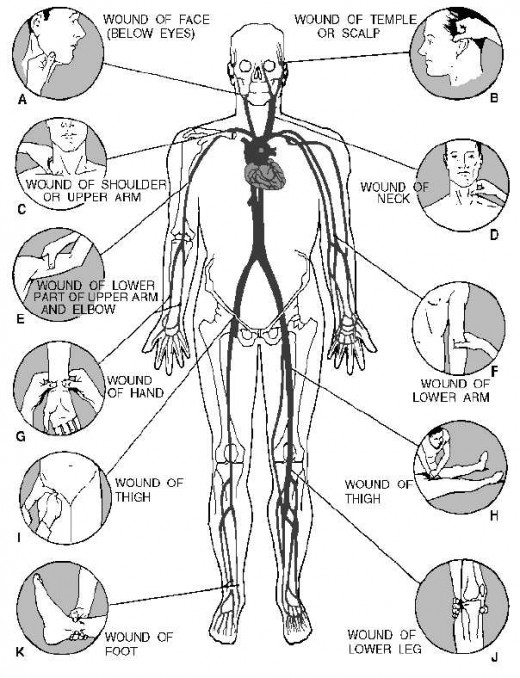First Aid for Bleeding/Hemorrhage
This hub contains first aid tips to control internal bleeding, as well as external bleeding.
Since profuse and steady bleeding from major blood vessel can be fatal within minutes, emergency measures must be taken without delay to reduce blood loss until the victim is hospitalized. The recommended procedures here can be applied by anyone who remains calm and competent.
Warning: Use tourniquet only as a last resort, if bleeding cannot be stopped and the situation is life-threatening.


Controlling external bleeding
1. Have patient lie down flat.
2. Place sterile gauze pad, sanitary napkin, clean handkerchief (or in the absence of these, any immediately available materials such as heavy paper or leaves) directly over the open wound.
3. If the bleeding is in the arm, leg, or head, elevate it above the level of the heart by the use of pillows, rolled-up blankets, newspapers, or other improvised props.
4. By the force of gravity, blood loss is reduced if at the same time that affected part is elevated, direct pressure is continued.
5. Apply direct, firm pressure (with your fingers or hand) over the wound; continue pressure 5 to 15 minutes.
6. If bleeding does not stop with prolonged direct pressure, and the wound is in the arm or the leg, apply a tourniquet for 10-15 minutes. Release to see if bleeding has stopped.If not, reapply tourniquet and transport patient to nearest doctor.
7. Do NOT apply a tourniquet until you have first tried pressure upon arteries supplying the arm and leg. This will often stop the bleeding and make the use of a tourniquet unnecessary. (These pressure points are located on the inner side of the upper arm and just below the groin.)
8. Most bleeding, unless from a major vessel, will stop within few minutes. Clean wound thoroughly with plain soap and water. If bleeding is too active, apply a tourniquet for 10 minutes in order to thoroughly cleanse the wound.
9. Bandage to stop bleeding should NOT be applied too tightly that it will interfere with the circulation. If the patient feels it is too tight, or if the tissue below the bandage turns blue in color, cut the bandage down the middle and apply new bandage material more loosely over the original bandage.
10. Take patient to doctor for possible further cleansing and stitching of the wound.
First aid tips for internal bleeding
Internal bleeding will usually evidence itself by the coughing up or vomiting of blood or "coffee ground" appearing material. Bleeding from the urinary tract will show itself upon passage of bloody urine. Bleeding from the intestinal tract will show itself by the blood in the stool or by passage of black, tarry tools. Have such a patient:
- Lie flat.
- Breathe deeply.
- Transport him as soon as possible to a hospital.
- Do NOT attempt to give medicines to such patients.
Conclusion
Bleeding from areas where tourniquets cannot be applied, such as the neck, should be treated by applying direct finger pressure over the wound. Keep pressure in place until doctor arrives.










